#today's rijksmuseum
Explore tagged Tumblr posts
Text

ik hou zoveel van je nijntje en nina en boris
1 note
·
View note
Text
LETTER From Jonathan Quincey Harker to Mina Harker Transcribed for the Whitby Archives
Monday 19th August 1906 Dearest Mother, I am writing to you today from the city of Amsterdam. Uncle Jack and I visited Uncle Abe and went to the Rijksmuseum together. It is a beautiful place. I was able to see a Rembrandt up close. I wish I were able to capture its beauty so I can bring it home to show you. Uncle Abe tells me that when he was a young man, this museum used to be a private royal collection, housed in far too small a room, but the new building makes it much easier to see the paintings. After the museum visit, we visited the Foundation headquarters. Uncle Abe needed to rest, so he took his leave, as his illness made it hard for him to be present with us. It is sad to see him so frail, but when he has the energy he has much life in his eyes. I was fortunate to see Anna and Evelyn while we were there. Mikael sent his best wishes, but he was already travelling as they had been preparing for their work in the Carpathians. I am eager to join them. Uncle Jack said that when I finished my schooling I could ask your permission to go. I hope that would be okay with you, Mother. I very much wish to help. We will travel back to England on Wednesday by train, so we should be home before the 24th as we have made dinner plans. Forgive me, but I have found the perfect gift for you in Amsterdam, which I will save for that day together. Thank you again for letting me go on this trip. Perhaps when schooling is over, we can do some travelling together? Love, Jonny
#the holmwood foundation#the holmwood foundation podcast#mina harker#jonathan quincey harker#abraham van helsing#dr jack seward#character extracts#extracts#extract
68 notes
·
View notes
Text
More than three centuries after she made a perilous transatlantic voyage to study butterflies, a rare copy of the hand-coloured masterwork by the great naturalist and artist Maria Sibylla Merian is returning to Amsterdam.
The Rijksmuseum, which holds more than half-a-million books on art and history, last week announced it had acquired a rare first-edition copy of Metamorphosis of the Insects of Suriname (Metamorphosis Insectorum Surinamensium), described as a high point of 18th-century book production when the Dutch Republic was “the bookshop of the world”.
More than half-a-metre tall and illustrated with 60 richly coloured plates, Metamorphosis revealed to a wider public the transformation of tropical insects from egg to adult.
Merian and her daughters produced about 200 copies from 1705, but today only an estimated 67 remain, and few with colour illustrations.
“It’s one of the most fascinating books in natural history that we know,” Alex Alsemgeest, curator of library collections at the Rijksmuseum, told the Observer. Also “quite exceptional”, he said, was that Merian took the entire book production process “into her own hands”, from the voyage to Suriname to the commercialisation of the work, which was sold to merchants and scientists across Europe.
With its beautiful, sometimes disturbing images, rendered with pinpoint precision, Metamorphosis is a work of art and scientific scholarship, from a time when there was no rigid division between disciplines. It is also part of the story of Dutch colonialism. Merian recorded the local names of plants and insects she studied. In contrast to other European naturalists, she credited local people with helping her discover the colony’s wildlife, although didn’t name individuals.
Finally, there is the fascinating life of Merian herself. As a 52-year-old divorcee, she embarked on a self-funded voyage to Suriname in 1699, driven by relentless curiosity about the lives of insects.
Born in Frankfurt, Merian learned to paint in her artist stepfather’s workshop, and became fascinated by silkworms, moths and butterflies. She married one of her stepfather’s apprentices and had two daughters. Ensconced in a comfortable life in Nuremberg, she bred and sketched caterpillars, publishing celebrated books about the plants and insects around her.
At this time, many people still believed that insects spontaneously generated in the dirt. While Merian was not the first to show the transformation from egg, through larva and pupa, to adult insect, “her artistic talents helped to bring this message to a wider audience” Alsemgeest said.
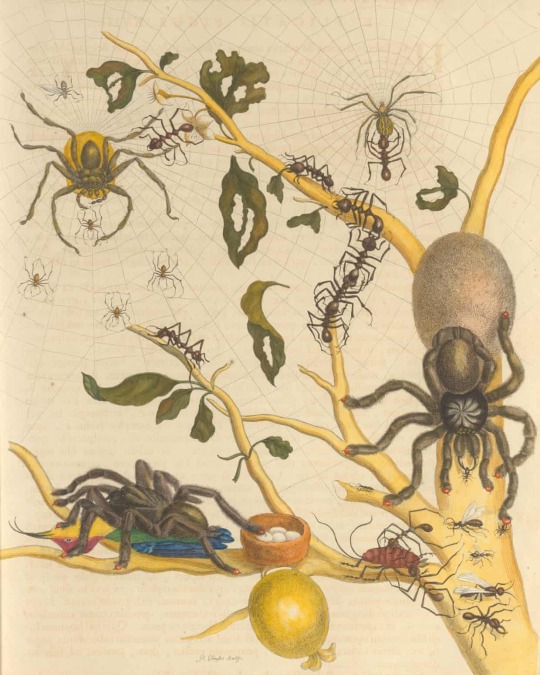
Described by the late historian Natalie Zemon Davis as “curious, wilful” and “a harder person to pin down” than other notable contemporaries, Merian left her husband to join a strict Protestant sect in Friesland, before eventually setting up a business in Amsterdam.
It was in the Dutch city she discovered in cabinets the vivid butterflies of Suriname, a Dutch colony until 1975, on the northern coast of South America. Having moved there with her younger daughter, Dorothea, she criticised Dutch settlers who only cared for sugar, ignoring the fertile potential of the soil for other crops.
While she wrote little about human behaviour, Merian noted the cruelty meted out to enslaved women. In a passage about a plant that induced abortions, she described them telling her that abortions would mean their children could be born free in their own country.
Her book depicted the beauty and savagery of the natural world, as well as some wincingly realistic creepy-crawlies. The first image shows cockroaches crawling over an unripened pineapple, a fruit then celebrated in Europe as a status symbol. In another illustration, a tarantula attacks a hummingbird. Merian is credited with giving the creature its Dutch name, vogelspin, meaning “bird-spider”.
Her image would be dismissed as a fantasy. Alsemgeest said: “In the 18th century, people responded: ‘that’s what you get when you send a woman to tropical places. She probably made that up’”. But scientists later confirmed her findings, he added.
The spider plate, he said, was a very good example of how Merian worked. “She was a really good observer.”
#radfem#radblr#radical feminism#gender critical#terfblr#radical feminist#radfem safe#terf safe#article#women in science#female artists
60 notes
·
View notes
Text
Belt Fitting/ belt mount
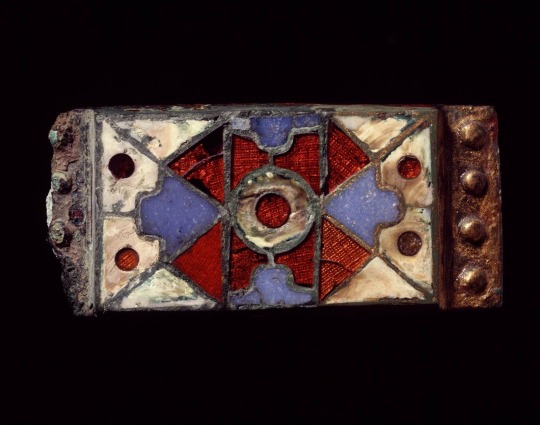
Merovingian dynasty Europeans loved to wear belts. They were today’s purses and held plenty of people’s personal belongings and hygiene tools. It’s possible that a variety of materials were used as belts, such as simple ropes from natural material, tablet woven belts, but most known are leather belts.
The leather has decayed, but it’s decorations show the owner’s wealth. Leather belts were decorated with metal mounts, in the case of belts more often called “fittings”. These fittings include thick pins on the back which allows for a secure fit.
Most often a belt consisted of a metal buckle, with the other end being decorated with another, often matching in style fitting. These often have different shaped, which may indicate that the edges of the leather were shaped to taste. The most elaborate belts consist of fittings all over the length of the belt.
The example above is a rarer decoration style, with enamel used instead of a full metal relief decorated or garnet decorated fitting. Despite being found in a grave dated to 630-640, the style may indicate that the fitting is actually older, most likely being passed on from one generation to the next, possibly originating from the 500-550’s.
Rijksmuseum van Oudheden, Leiden, Zuid Holland - The Netherlands
Museum nr. h.1913/11.89
Found in Rijnsburg-Katwijk, Zuid Holland - The Netherlands
#frankish#merovingian#viking archaeology#archaeology#carolingian#charlemagne#field archaeology#viking mythology#merovingian archaeology#germanic mythology#norse mythology#anglo saxon#viking#field archaeologist#frisian#odin#vikings#germanic#germanic folklore#germanic archaeology#dress history
119 notes
·
View notes
Text
I feel like I could write roughly ten thousand words about my newly formed and extremely complex relationship with Amsterdam, given I only spent six hours there and two of those were in the train station. I have three or four posts in my head about it, from "Why is every indoor space in this city kept at roughly the boiling point of Tungsten" to "The Nice Things That Happened To Me In Amsterdam" to "That Time Someone Stole My Stroopwafel" but I think you all will be most entertained by the fact that I have a new feud, and it is with the entire Rijksmuseum.
I've been in museums that were a bit crap and museums that didn't interest me and even museums like today's that were physically uncomfortable, but I have never so hated a museum as I hated the Rijksmuseum by the time I left it.
And it's not the Rijksmuseum's fault! Yes, there are issues with the museum's physical structure -- the insane number of stairs and lack of lifts, the fact that the thermostat could be turned down from "temperature of the sun" to "next door to hell" if they wanted, the bizarrely poor lighting -- but not all of those can be fixed, and they're clearly doing their best. Plus it was mad crowded. But I've been in crowded, poorly-designed spaces before and always found something to love. There was nothing for me in the Rijksmuseum.
So I don't think it's the museum itself. I think that museum and I have some kind of spiritual feud. I think the museum feels actively malevolent to me in a way few buildings ever have because it hates me, personally. I don't know why -- could be to do with my Dutch ancestor who left Amsterdam (the infamous Mennonite Pirate) or perhaps it knows my heart truly belongs to the Art Institute and this is spite. In any case, it may think it has won, but I'm retreating strategically. Someday I will come back to Amsterdam and I will fight the Rijksmuseum and we will settle this once and for all. Bicycles will undoubtedly be involved.
I will eventually do a post about the lovely things I did in Amsterdam, including the grocery store (also kept at the melting point of steel, unfortunately) and Albert Cuyp Market, where I got the stroopwafel (eventually) and bought a nice new bag, and even the genuinely best part of the day, where I walked down a side street to Sarphatipark and discovered that Amsterdam is really very beautiful and quiet if you step off the main roads. @rumtastique I have to apologize for being mortal enemies with the Rijksmuseum but as mentioned in comments you did absolutely save my life when I consulted my notes from talks we'd had about Amsterdam and took advantage of all your good advice (particularly the advice about having cash on hand). (Josh, I didn't get to the bakery you recommended but I really wanted to. I'm keeping it in my notes for next time.)
Still, while I will make those posts, I have been awake since 3am and that's part of the problem, so I'm going to set an alarm to wake me before we reach Paris, and sleep until then.
This isn't over, Rijksmuseum. And next time I'll come prepared: I'll wear a tank top.
221 notes
·
View notes
Text

Chris van Otterloo. He became the only student that the famous etching master Ryohei Tanaka ever took. Today Chris van Otterloo's works are to be found in such museums like the famous Rijksmuseum in Amsterdam. ( via )
17 notes
·
View notes
Text
Seventeenth-Century Pocket Book

Today, approximately 30 currencies are in use among the fifty nations of Europe. Back in the 1600s, things were much more complex, as illustrated in this Dutch catalog of woodcuts of 1,685 coins (many scaled to actual size). European cities, duchies, dioceses, and other localized governing bodies issued their own unique sets of coinage.

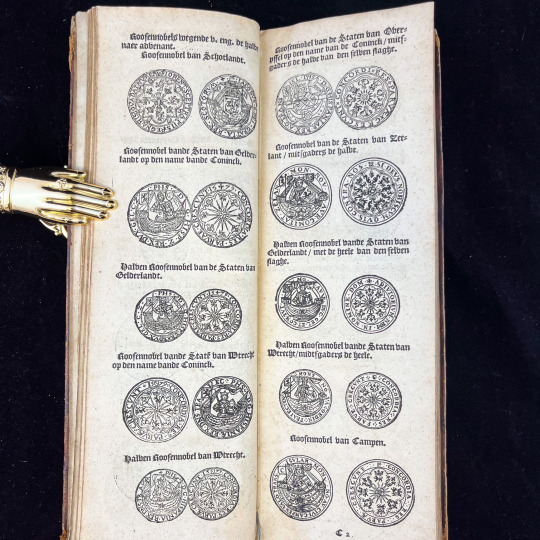
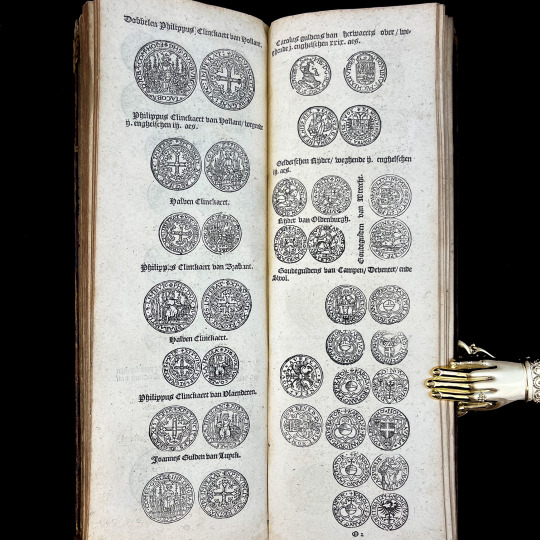
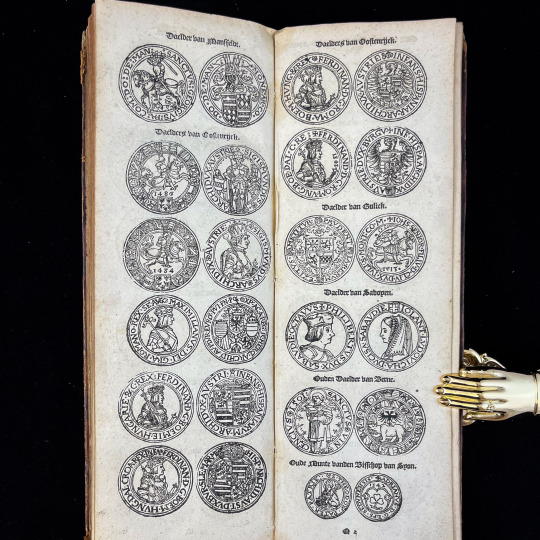
This book was printed in 1633 by Hieronymus Verdussen of the Verdussen publishing dynasty in Antwerp. At this point in history, the Netherlands dominated international trade. During the "Dutch Golden Age," the Netherlands was enriched by the establishment of the Dutch East Trading Company in 1602 and the Dutch West Trading Company in 1621. A pocket book such as the one showcased here would have seen heavy use by Dutch merchants needing a handy reference work to distinguish the hundreds of different coins in circulation.
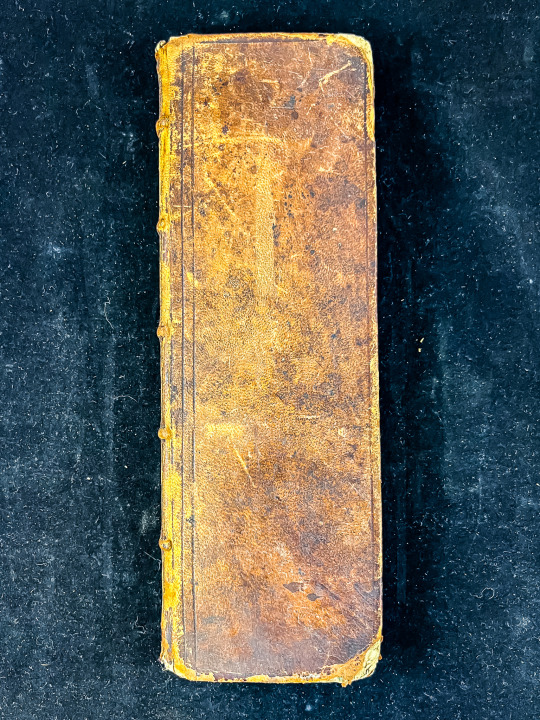
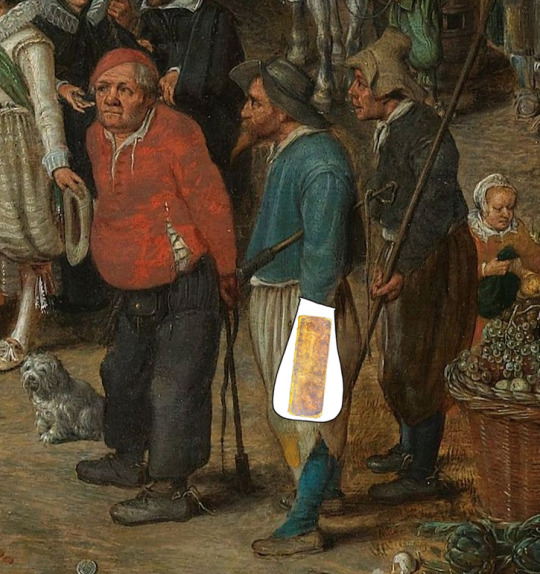
And yes, this is indeed a “pocket” book! The unusual dimensions of this volume (31 x 10.5 cm) fit very well in the pockets of the early 17th century (abt. 40 x 30 cm). (Fun fact: the modern pocket as sewn into clothes was developed in 17th century Europe!)
Images from: Ordonnancie ende instructie naer de welcke voort-aen hen moeten reguleren die ghesworen wisselaers ofte collecteurs vande goude ende silver penningen. Antwerp: Hieronymous Verdussen, 1633. Catalog record: https://bit.ly/3IAMeA8
Van de Venne, Adriaen Pietersz. Prins Maurits en Frederik Hendrik op de paardenmarkt van Valkenburg. Oil on panel, 1618. Currently held by the Rijksmuseum.
126 notes
·
View notes
Text

For today's @creators-club prompt, I want to tell the story of how I wrote this flash fiction called Endings with You.
One year ago, I was on an expertise exchange program in The Netherlands. During my final weekend there, I took a day trip to Amsterdam by myself. My goals were: guided tour at the Rijksmuseum (pictured above), visit the American Book Center bookshop and Waterstones, and walk along some canals. I've succeeded in all there and it was a wonderful day, but I was alone, I had no one to talk to, and I decided I'll just narrate a story in my head, like I used to do as a child. At the time I was reading Cage of Souls by Adrian Tchaikovsky and I was so moved by his descriptions of a dying planet where the sun is expanding every day. Inspired by this book, I started thinking about the end of the world in a very romantic way. With whom would I want to spend the last day of the Earth's history, if I knew it will happen in my lifetime? If I knew the end was nigh, would I have the courage to speak my mind? If the world couldn't be saved, how would I pass the time until the end of it all? I hardly ever write romance and when I do, it's usually between a woman and a man. So I challenged myself to change it up, and wrote this scene between two young men in love, studying poetry in one of the last universities, because there is nothing else left to do. I wrote it all in my head while walking from the train station in Amsterdam to the Rijksmuseum (via the bookstores mentioned) and back, except for the last paragraph. I wasn't sure how to end it, I wasn't sure what to do with it. Then came the prompt from flashfictionfryday, and inspiration struck again. I typed up the story, I composed the last paragraph, and I sent it into the world.
#mine:writing#writerblr#writeblr#writers on tumblr#i'm still so fond of that little story#like that is romance to me. what is my ideal date night you ask? watching the end of the world while holding hands
4 notes
·
View notes
Text
Today is both #NationalPeacockDay & #WorldStorkDay …

Adriaen Collaert (Flemish, c.1560-1618)
Twee vogels in een landschap: Pavo (pauw) en Ciconia (ooievaar) [Peacock & Stork], 1598-1602
engraving, w 187 x h 128 mm
Rijksmuseum RP-P-1892-A-17421
#animals in art#animal holiday#european art#birds in art#bird#illustration#birds#natural history art#engraving#print#Flemish art#16th century art#17th century art#rijksmuseum#Adriaen Collaert#peacock#stork#World Stork Day#National Peacock Day#monochrome
6 notes
·
View notes
Text

Off to the Rijksmuseum today \o/
#It's been almost 12 years since I last went?#I thought it was less but wow#Time flies#I'm looking forward to getting a proper look around this time as I was with a group who flew through#Also NedPort ZD reasons make maiva v happy today 🥹#I haven't even left the country yet but I'm thinking about the next trip
8 notes
·
View notes
Text
Getting to Know Me
Rules: Tag 10 people you want to get to know better.
I was tagged by @jomiddlemarch (thanks, my dear).
Relationship Status: Married almost 26 years, together for 29.
Favorite Color: Used to like white, then black for years, and now, big surprise, I've settled on charcoal grey. Hides pet fur really well!
Song Stuck in My Head: I woke up today with “Octopus’s Garden” in my head.
Last Song I Listened To: "Voices Inside My Head" by the Police
Three Favorite Foods: Korean bibimbap, any bitter greens, and boiled lobster. But this is a bit sad–I don't feel like I get excited by food taste anymore since I first got covid two years ago
Last Thing I Googled: ”Hawthorn tree in winter” for a fanfic, of course
Dream Trip: Last night we were talking about going to Japan as a family. But I’d also like to go back to London for a few focused Tate visits, or go to the Rijksmuseum in Amsterdam. Or sepnd a weekend alone in Berlin.
Tagging (no pressure): @veryflowerobservation @londonista59 @suziebeegee @abradner1 @feelingjane @amherstsunrise63 @perfectdiplomatsharkoperator @dreamstone28737 @katie-with-the-tea @musicalgeek42 and anyone else who wants to play!
7 notes
·
View notes
Note
Hi Bee, welcome to Belgium. I forgot to warn you about the lack of English in Brussels-midi, Tbf I rarely go their unless I have a connecting train, which I did today. Also, yeah, you tend to have to pay for public bathrooms in Belgium, usually it’s only like 50 cent or one 1 at most. A lot of restaurants work with a code on you bill so you have to buy something first to get into the bathroom. Though that’s more the informal stuff like McDonald’s and such because anyone could walk in there. You also have to pay at gas stations like 99% of the time, but they then give you a coupon worth those 50 cents to spend in the store.
Also, I assume you were taking the Eurostar and it’s kinda shit it got cancelled (at least you got a new one the same day). Also, there were a lot of issues with international traffic today (my Thalys got delayed and things like that tend to richorcette for a bit) I do hope you managed to get to England and I hope you have no more travel issues. I wish I saw this sooner cuz there’s a really good takeaway pasta place at Brussels midi.
Oh yeah, coffee shops sell weed in Amsterdam. It’s very legal there. And once you smell weed, you will forever recognise the sent. Although it sucks that you lost a day, the Rijksmuseum is one of the mos fun museums in Amsterdam. So it’s nice you did get to do that one.
-🌲
Oh my god you were at Brussels-Midi today?? I was there for like 3 hours waiting for my connection imagine if we walked by each other at one point thats so funny
Yeah that makes sense I suppose, still was a bit of a shock to see for the first time lol. Good to know it’s all across Belgium tho so I’m not taken by surprise when I go back there next week
Yes I was taking the Eurostar it was such a mess trying to figure out what was going on while we were on our way to Brussels 😭 I’m very glad we got another train the same day tho. Sucks that your Thalys train got delayed!! Also ooo I wish I’d heard your rec I only got a coffee at the station and I’m so hungry rn
I’m omw to London at the moment and from there I gotta catch a train to Brighton so hopefully I don’t get to my hostel too late. We’ll see but at least we didn’t have any plans for today bc of all the traveling
Oh yeah I’m familiar with the smell of weed lmao I live in California and weed is extremely legal there too. I just wasn’t expecting to struggle finding coffee bc all the weed places just call themselves coffee shops 😭 I’m so glad we went to the Rijksmuseum though I’ve been to a lot of art museums and I have to say that’s one of my top ones so far
5 notes
·
View notes
Text
went for a long walk today and passed the museum square. wanted to drop in at the rijksmuseum for a spontaneous visit but my museum card was gone. sank to my knees in the middle of the street into a puddle, screamed at the sky, threw up blood etc. but the walk was nice and i found some great books in a street library
11 notes
·
View notes
Text
Historic Hounds



A stunning example of the Greyhounds rich history as a Beloved Companion Animal. Strolling through the corridors of the Rijksmuseum, Amsterdam, tucked between stunning paintings of shipwrecks and Victorian menageries is this carved wooden statue of a very elegant Greyhound. The hound carving reminds us that Greyhounds have been prized house pets, particularly amongst the elite, for centuries, and connects the dogs of today with those throughout history, dating back through to the sighthounds of Celtic and Egyptian times.
It’s only in modern times, since the advent of commercial Greyhound Racing, that this ancient and historic breed has been reduced down to nothing more than a commodity; a simple “race dog”. One of the arguments made by pro-racers is that without Greyhound Racing, Greyhounds would go the way of the turnspit dog, and vanish off the face of the earth since there would be no purpose for them. I can’t help but laugh at this remark, considering how many other breeds are beloved across the world that exist outside of their original purpose. If every home with a Golden Retriever was out bird hunting, there wouldn’t be a duck left in the sky. If every home with a Border Collie was out herding sheep, then there would be a flock in every second back garden. The list is endless; German Shepherds, Labrador, Schnauzers, Jack Russel Terriers, Poodles, so on and so forth. Breeds prized as beloved companions now-a-days didn’t start of that way. Just because we banned bull-baiting as unethical and cruel doesn’t mean all bulldogs have gone extinct.
It’s true that when commercial Greyhound Racing is banned, that the population of Greyhounds drop, but that’s not necessarily a bad thing. If anything, it proves that they were incredibly overbred to begin with, which led to their over abundance in rescues and shelters in the first place! But that doesn’t mean that greyhounds don’t exist in countries that don’t have any form of commercial racing. You’ll still find Greyhounds in Germany, despite no commercial race tracks existing there. At the end of the day, I’d much rather a small, well managed population of Greyhounds, bred by those who truly admire the breed for their rich, ancient history, versus the dime a dozen approach that currently exists in Ireland, the UK, Austrailaia an dcountries where commericial racing exists.
#Greyhound #GreyhoundsofTumblr #Snootblr #Art #WoodCarving #DogArt #BanGreyhoundRacing #PetsNotBets #RescuedNotRetired
5 notes
·
View notes
Text
I had a very successful and entertaining day today, as you guys can probably tell from the posts I made. There's a few more queued posts of stuff I didn't get to post in-situ, so enjoy that!
Some anecdotes I did not post about from today:
-- I can't remember the last time I queued for a museum. Mostly because if it's not one of "my" museums, like the Field or the Art Institute where I know the best ways in, I'm attending on a weekday deliberately so that I am not amongst the crowds. The line to get into the British Museum was a full block long, but to be fair it only took me ten minutes from opening to get inside. I was mostly amused by the people who a) didn't understand how museum entry works or b) didn't understand how to stand in a line without also blocking foot traffic on the rest of the sidewalk.
-- Almost got in a fight with someone, a definite first for me in a museum. I got salty with a guy who touched a sculpture when he knew he shouldn't, and he got up in my face, and I think genuinely the fact that I knew what the sculpture was called and he didn't confused him so badly he backed down. So if you're looking to defuse a situation via confusion, the phrase "Hey, don't fucking touch the Lamassu and we won't have a problem" worked for me.
-- The British Museum is great but among other issues (looted objects, weird relics of museum-specific imperialism, etc) it does suffer from poor display design in places. I'm okay with that, I kind of like old museums that are a little fucked up, even as I acknowledge that old fucked-up museums also have old fucked-up messaging. They appear to be trying on that front, but they could use a display placard overhaul. At one point I found an object in a case that appeared to be a carved human leg bone, and while I'm not a Bone Specialist there was also absolutely no placard about the bone at all. (I looked it up in the collection later using other objects in the case as reference, and it's just noted as "bone".)
-- I did have a great time overall; I saw most of the museum and then had a fancy meal, as documented. I was especially pleased to get to sample their coronation chicken since I collect tastings of coronation chicken, and I think they either used molasses in it or the bread had some, and either way it's grist for my mill as I start to develop The Chicken Salad War. After lunch I went on the hunt for a few last things, but I could feel myself getting tired and Becoming Unmedicated so I decided to leave a little early, which was the right choice, and gave me a little time to do some exploring.
-- @neil-gaiman did a post a while ago about stuff to see in London which I saved, and while I mostly planned my own journey, I did stop at Atlantis Books on his recommendation, which was well worth it. The woman working the till left me alone until I was ready to buy my book, then praised my choice (always a good move) and made a few minutes' small talk about my visit from America while she was ringing me up. Also I have never seen such a variety of Tarot decks for sale in my life. It was extremely impressive given the entire shop is roughly the size of my bedroom in Chicago.
All in all an excellent day out in London. Tomorrow I'm traveling to meet up with a friend, so probably fewer photos, but day after tomorrow I'm bound for Amsterdam so expect Rijksmuseum photos! I did not get into the Vermeer exhibit sadly, but I still want to see the museum and I'm on a quest for freshly made stroopwaffels and authentic gjetost, so I'm excited for the journey. I thought this trip might be one small anxiety after another -- would I be okay on the plane, would I get on the right trains, etc -- but I'm feeling more confident now, and I think between my early-bird tendencies and the ADHD meds I kicked the jet lag pretty quickly. I'm off to bed in a few, because tomorrow is an early day, so I guess we'll find out then how much I really kicked it....
206 notes
·
View notes
Text

Still life with plaster casts, made by Daguerre in 1837, the earliest reliably dated daguerreotype. By Louis Daguerre - Société française de photographie, Public Domain
Daguerreotype was the first publicly available photographic process; it was widely used during the 1840s and 1850s. "Daguerreotype" also refers to an image created through this process.
Invented by Louis Daguerre and introduced worldwide in 1839, the daguerreotype was almost completely superseded by 1860 with new, less expensive processes, such as ambrotype (collodion process), that yield more readily viewable images. There has been a revival of the daguerreotype since the late 20th century by a small number of photographers interested in making artistic use of early photographic processes. Source: Wikipedia

Graphic representation of the steps involved in making a daguerreotype
By This image has been created during "DensityDesign Integrated Course Final Synthesis Studio" at Polytechnic University of Milan, organized by DensityDesign Research Lab in 2015. Image is released under CC-BY-SA licence. Attribution goes to "Susanna Celeste Castelli, DensityDesign Research Lab". - Own work.
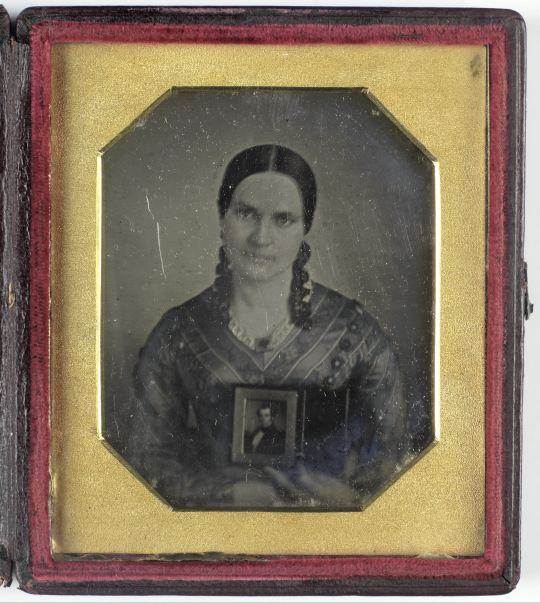
Portrait of a Young Woman with Daguerreotype, Mathew Benjamin Brady (attributed to), 1840 - 1860 daguerreotype, colored and shown in gold; in leather pouch with velvet lining, h 66mm × w 53mm More item details
A picture within a picture that tells the whole story. The daguerreotype is not the fleeting portrait of today, but a rare image of a loved one to carry close to you and cherish. Like the woman in this photo does with her husband's portrait. A daguerreotype was unique and fragile. That is why she was packed in a beautiful frame or decorated case. Source: Rijksmuseum

Group portrait of members of the Asser family and acquaintances, Eduard Isaac Asser, 1850 daguerreotype, h 81mm × w 71mm Source: Rijksmuseum

Portrait of Betsy Tyndall-de Veer with Beth, anonymous, c. 1841 - c. 1849 daguerreotype; in a paper passe-partout, h 119mm × w 86mm Source: Rijksmuseum
Find the best vintage and antique gifts: toughtofind.nl
#daguerreotype#photography#louis daguerre#portrait#cabinet of curiosities#Toughtofind#19th century#memento mori
3 notes
·
View notes